
claude-code-router
Use Claude Code without an Anthropics account and route it to another LLM provider
Stars: 75
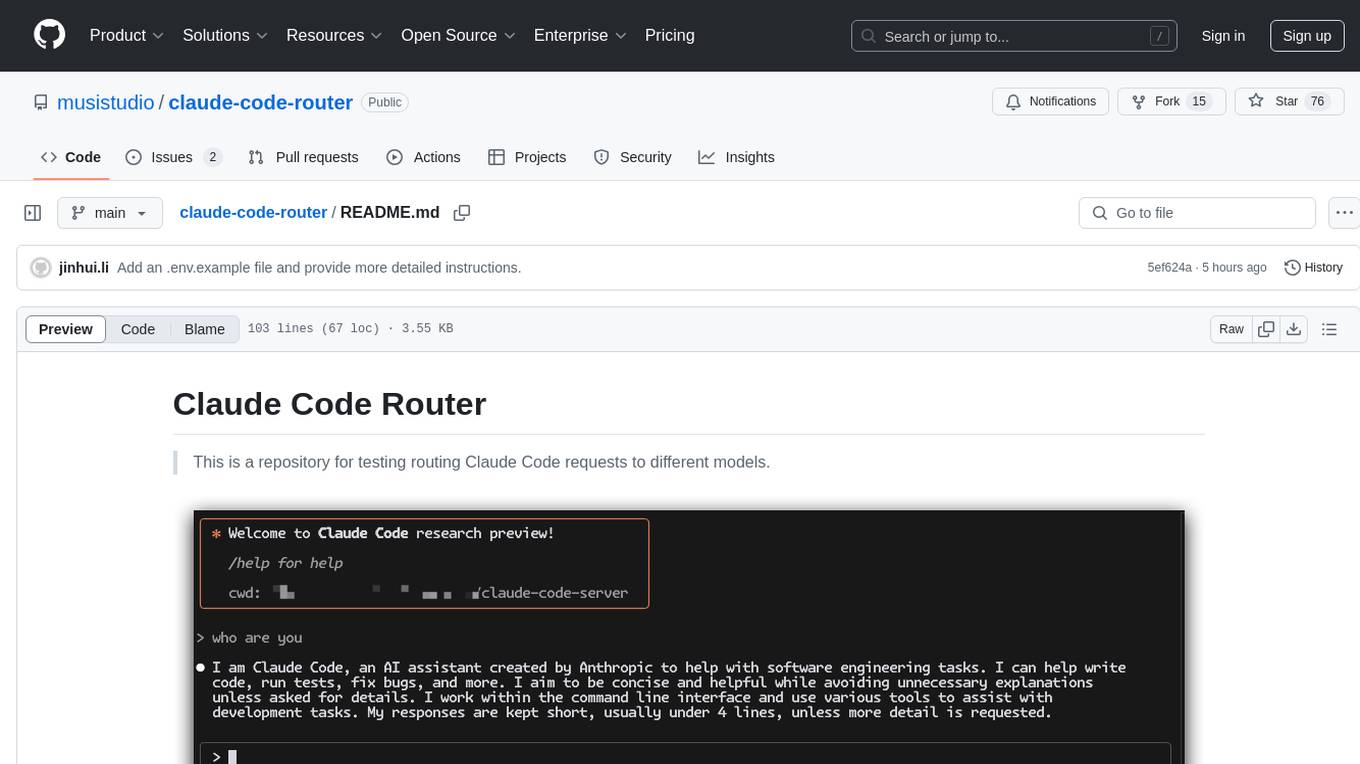
This repository is for testing routing Claude Code requests to different models. It implements Normal Mode and Router Mode, using various models like qwen2.5-coder-3b-instruct, qwen-max-0125, deepseek-v3, and deepseek-r1. The project aims to reduce the cost of using Claude Code by leveraging free models and KV-Cache. Users can set appropriate ignorePatterns for the project. The Router Mode allows for the separation of tool invocation from coding tasks by using multiple models for different purposes.
README:
This is a repository for testing routing Claude Code requests to different models.
Warning! This project is for testing purposes and may consume a lot of tokens! It may also fail to complete tasks!
-
[x] Mormal Mode and Router Mode
-
[x] Using the qwen2.5-coder-3b-instruct model as the routing dispatcher (since it’s currently free on Alibaba Cloud’s official website)
-
[x] Using the qwen-max-0125 model as the tool invoker
-
[x] Using deepseek-v3 as the coder model
-
[x] Using deepseek-r1 as the reasoning model
Thanks to the free qwen2.5-coder-3b-instruct model from Alibaba and deepseek’s KV-Cache, we can significantly reduce the cost of using Claude Code. Make sure to set appropriate ignorePatterns for the project. See: https://docs.anthropic.com/en/docs/agents-and-tools/claude-code/overview
- Install Claude Code
npm install -g @anthropic-ai/claude-code- Clone this repo
git clone https://github.com/musistudio/claude-code-reverse.git- Install dependencies
npm i- Start server
# Alternatively, you can create an .env file in the repo directory
# You can refer to the .env.example file to create the .env file
## disable router
ENABLE_ROUTER=false
OPENAI_API_KEY=""
OPENAI_BASE_URL=""
OPENAI_MODEL=""
## enable router
ENABLE_ROUTER=true
export TOOL_AGENT_API_KEY=""
export TOOL_AGENT_BASE_URL=""
export TOOL_AGENT_MODEL="qwen-max-2025-01-25"
export CODER_AGENT_API_KEY=""
export CODER_AGENT_BASE_URL="https://api.deepseek.com"
export CODER_AGENT_MODEL="deepseek-chat"
export THINK_AGENT_API_KEY=""
export THINK_AGENT_BASE_URL="https://api.deepseek.com"
export THINK_AGENT_MODEL="deepseek-reasoner"
export ROUTER_AGENT_API_KEY=""
export ROUTER_AGENT_BASE_URL=""
export ROUTER_AGENT_MODEL="qwen2.5-coder-3b-instruct"
node index.mjs- Set environment variable to start claude code
export DISABLE_PROMPT_CACHING=1
export ANTHROPIC_AUTH_TOKEN="test"
export ANTHROPIC_BASE_URL="http://127.0.0.1:3456"
export API_TIMEOUT_MS=600000
claudeThe initial version uses a single model to accomplish all tasks. This model needs to support function calling and must allow for a sufficiently large tool description length, ideally greater than 1754. If the model used in this mode does not support KV Cache, it will consume a significant number of tokens.
Using multiple models to handle different tasks, this mode requires setting ENABLE_ROUTER to true and configuring four models: ROUTER_AGENT_MODEL, TOOL_AGENT_MODEL, CODER_AGENT_MODEL, and THINK_AGENT_MODEL.
ROUTER_AGENT_MODEL does not require high intelligence and is only responsible for request routing. A small model is sufficient for this task (testing has shown that the qwen-coder-3b model performs well). TOOL_AGENT_MODEL must support function calling and allow for a sufficiently large tool description length, ideally greater than 1754. If the model used in this mode does not support KV Cache, it will consume a significant number of tokens.
CODER_AGENT_MODEL and THINK_AGENT_MODEL can use the DeepSeek series of models.
The purpose of router mode is to separate tool invocation from coding tasks, enabling the use of inference models like r1, which do not support function calling.
For Tasks:
Click tags to check more tools for each tasksFor Jobs:
Alternative AI tools for claude-code-router
Similar Open Source Tools

claude-code-router
This repository is for testing routing Claude Code requests to different models. It implements Normal Mode and Router Mode, using various models like qwen2.5-coder-3b-instruct, qwen-max-0125, deepseek-v3, and deepseek-r1. The project aims to reduce the cost of using Claude Code by leveraging free models and KV-Cache. Users can set appropriate ignorePatterns for the project. The Router Mode allows for the separation of tool invocation from coding tasks by using multiple models for different purposes.
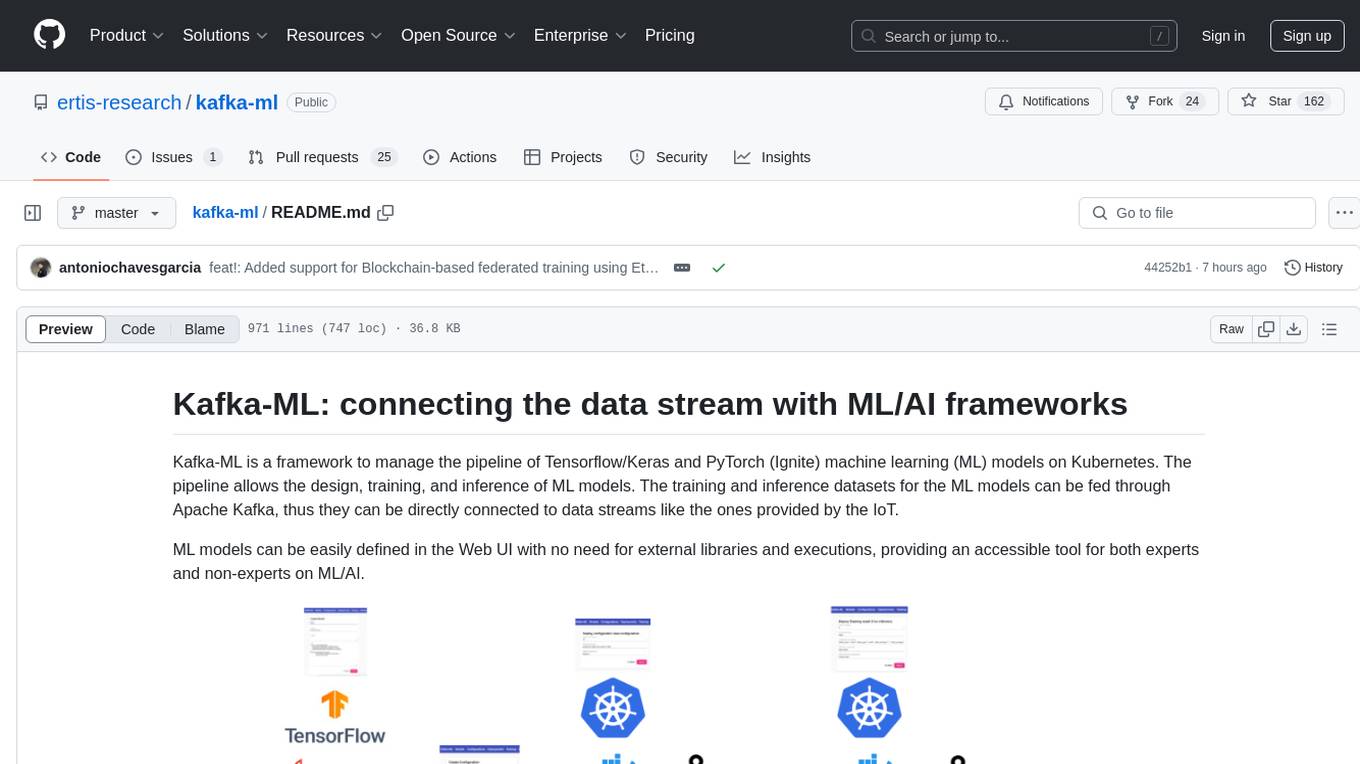
kafka-ml
Kafka-ML is a framework designed to manage the pipeline of Tensorflow/Keras and PyTorch machine learning models on Kubernetes. It enables the design, training, and inference of ML models with datasets fed through Apache Kafka, connecting them directly to data streams like those from IoT devices. The Web UI allows easy definition of ML models without external libraries, catering to both experts and non-experts in ML/AI.
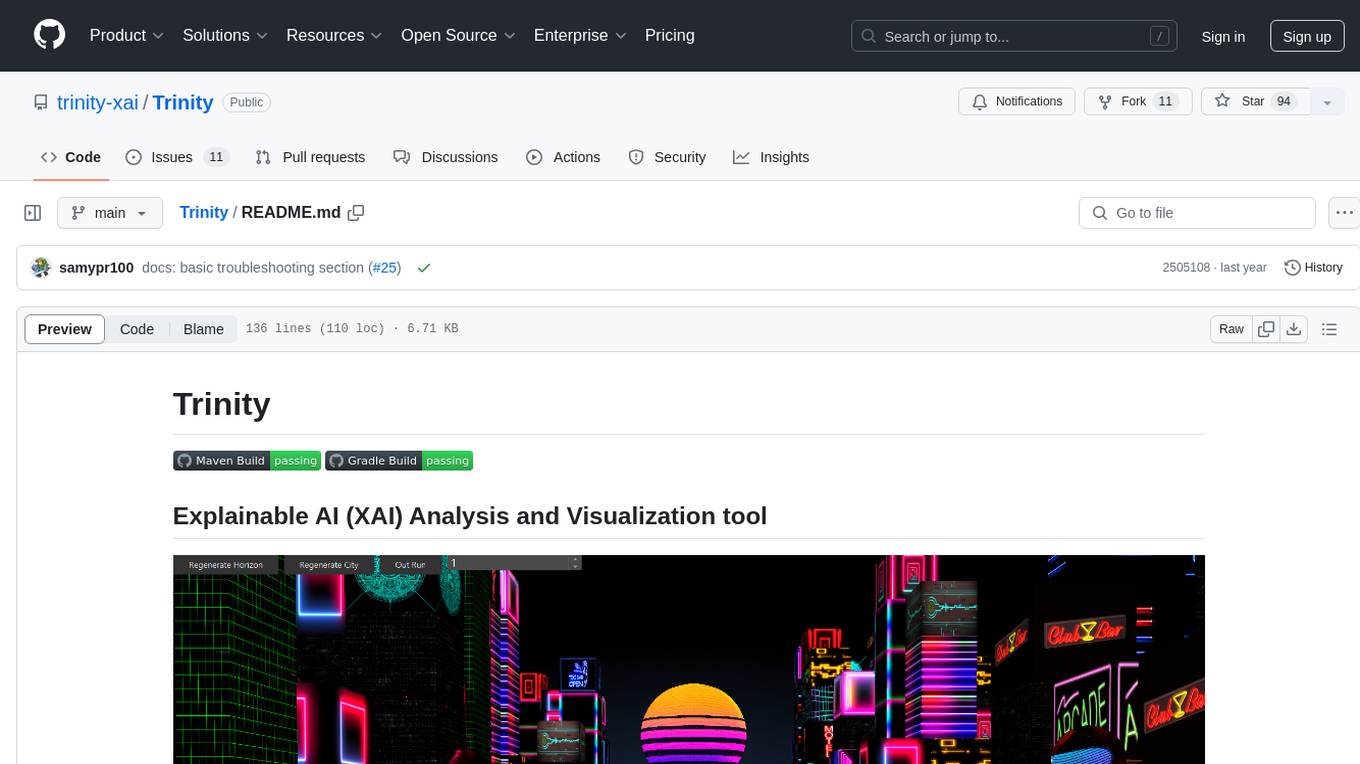
Trinity
Trinity is an Explainable AI (XAI) Analysis and Visualization tool designed for Deep Learning systems or other models performing complex classification or decoding. It provides performance analysis through interactive 3D projections that are hyper-dimensional aware, allowing users to explore hyperspace, hypersurface, projections, and manifolds. Trinity primarily works with JSON data formats and supports the visualization of FeatureVector objects. Users can analyze and visualize data points, correlate inputs with classification results, and create custom color maps for better data interpretation. Trinity has been successfully applied to various use cases including Deep Learning Object detection models, COVID gene/tissue classification, Brain Computer Interface decoders, and Large Language Model (ChatGPT) Embeddings Analysis.
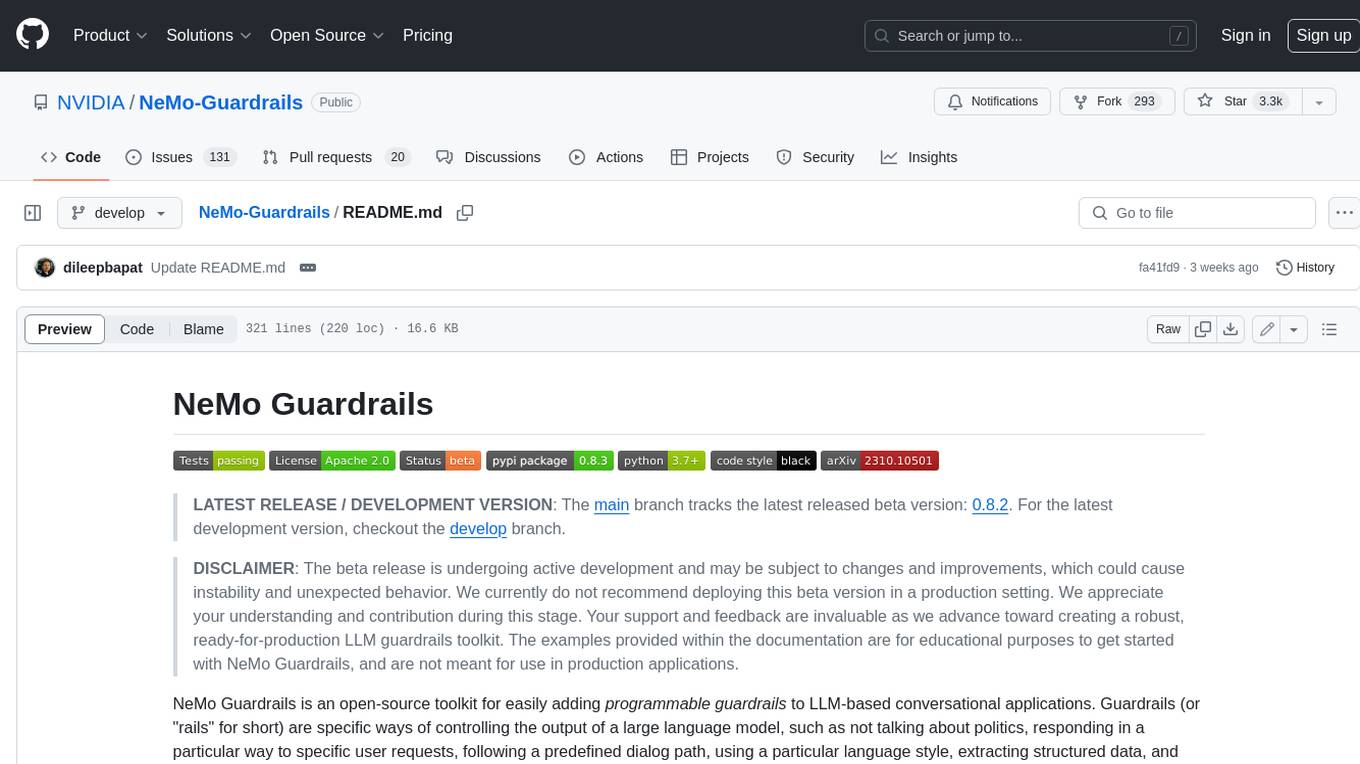
Guardrails
Guardrails is a security tool designed to help developers identify and fix security vulnerabilities in their code. It provides automated scanning and analysis of code repositories to detect potential security issues, such as sensitive data exposure, injection attacks, and insecure configurations. By integrating Guardrails into the development workflow, teams can proactively address security concerns and reduce the risk of security breaches. The tool offers detailed reports and actionable recommendations to guide developers in remediation efforts, ultimately improving the overall security posture of the codebase. Guardrails supports multiple programming languages and frameworks, making it versatile and adaptable to different development environments. With its user-friendly interface and seamless integration with popular version control systems, Guardrails empowers developers to prioritize security without compromising productivity.
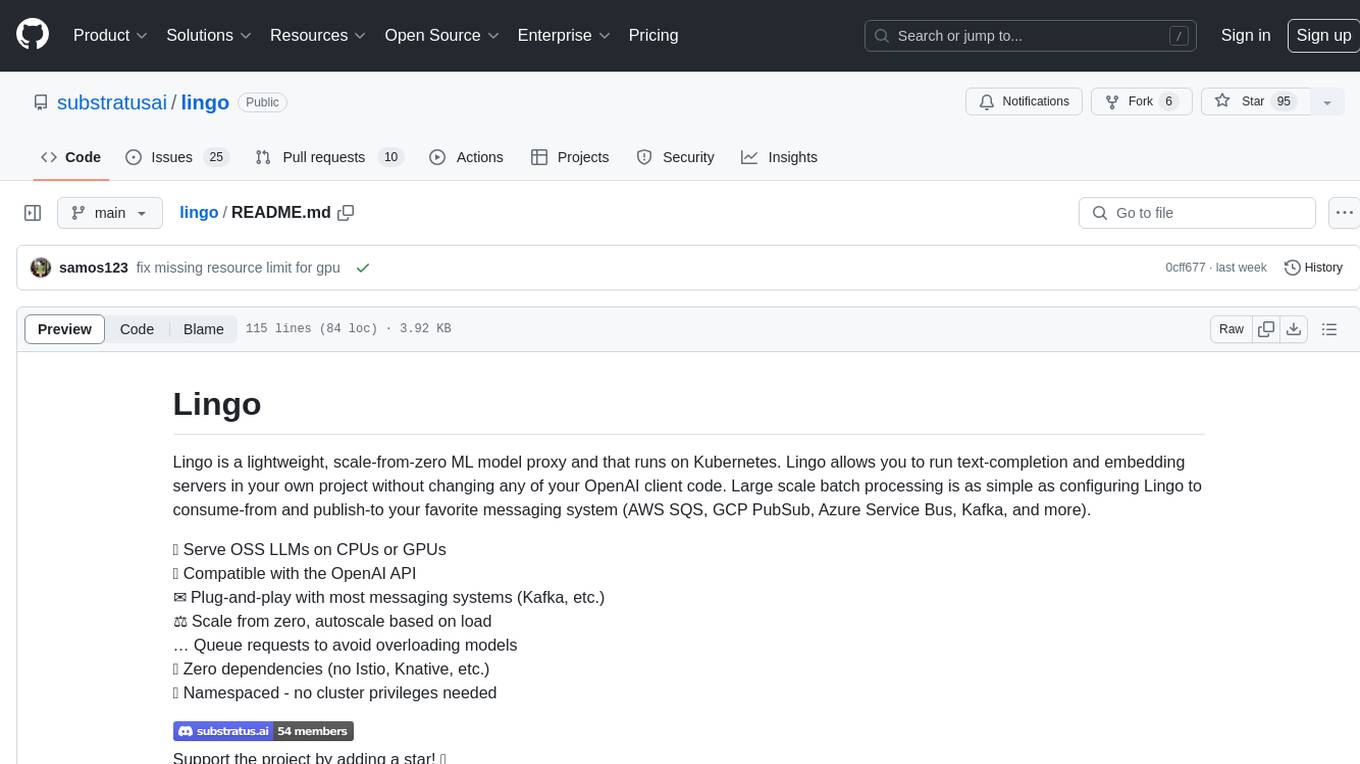
lingo
Lingo is a lightweight ML model proxy that runs on Kubernetes, allowing you to run text-completion and embedding servers without changing OpenAI client code. It supports serving OSS LLMs, is compatible with OpenAI API, plug-and-play with messaging systems, scales from zero based on load, and has zero dependencies. Namespaced with no cluster privileges needed.
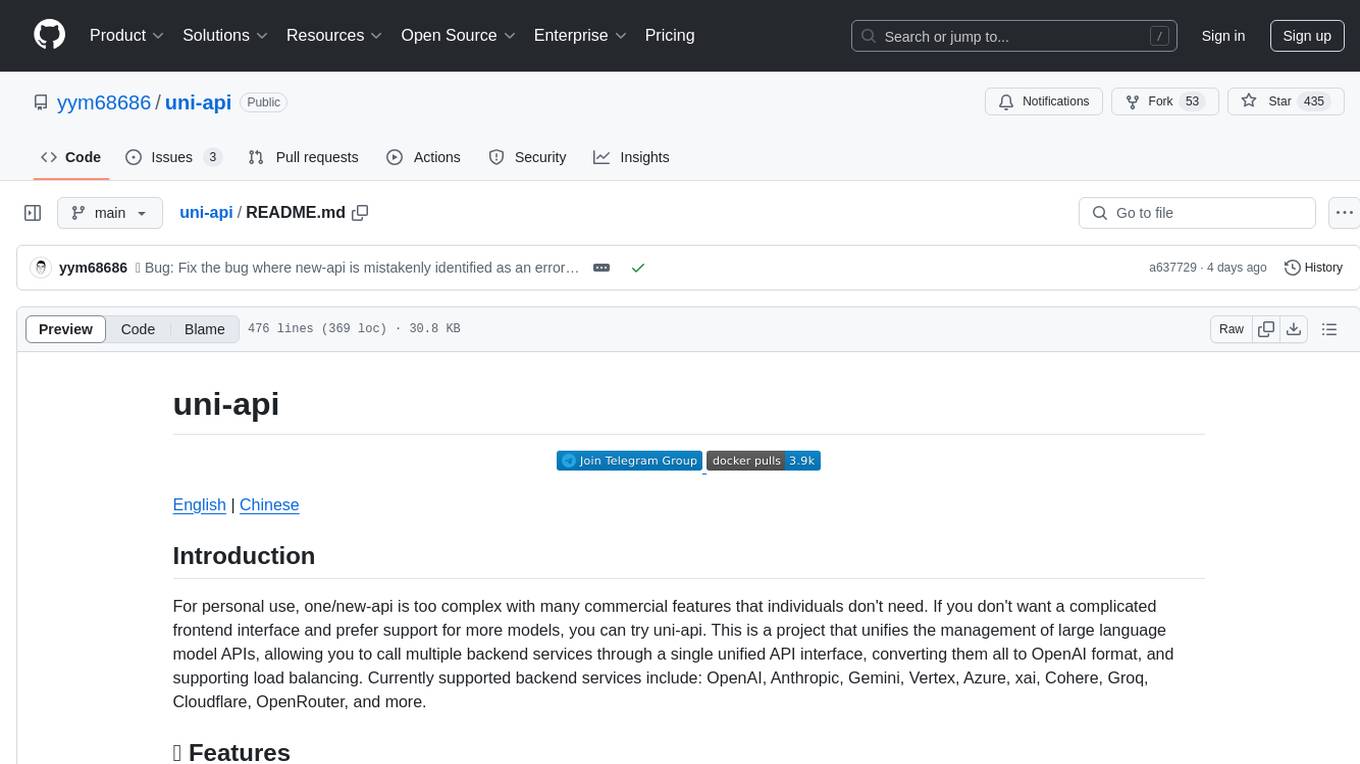
uni-api
uni-api is a project that unifies the management of large language model APIs, allowing you to call multiple backend services through a single unified API interface, converting them all to OpenAI format, and supporting load balancing. It supports various backend services such as OpenAI, Anthropic, Gemini, Vertex, Azure, xai, Cohere, Groq, Cloudflare, OpenRouter, and more. The project offers features like no front-end, pure configuration file setup, unified management of multiple backend services, support for multiple standard OpenAI format interfaces, rate limiting, automatic retry, channel cooling, fine-grained model timeout settings, and fine-grained permission control.
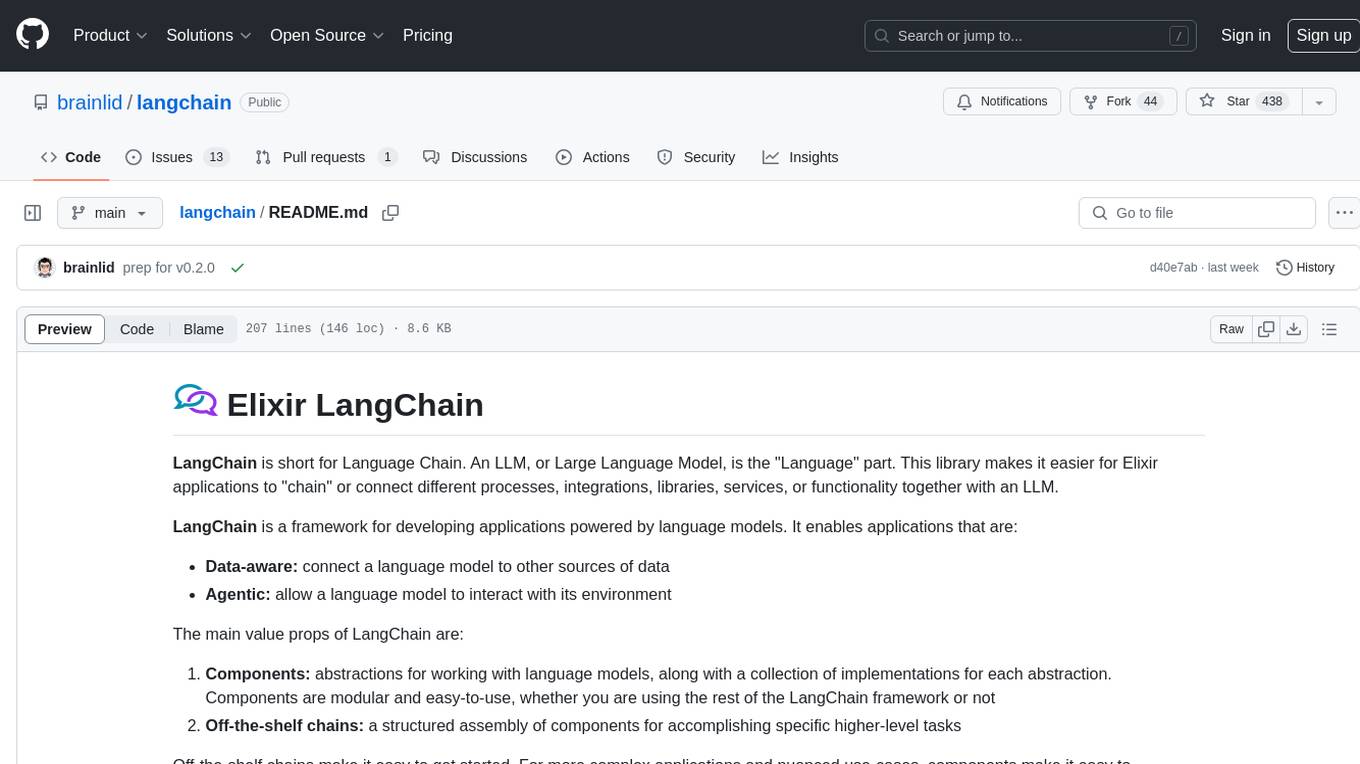
langchain
LangChain is a framework for developing Elixir applications powered by language models. It enables applications to connect language models to other data sources and interact with the environment. The library provides components for working with language models and off-the-shelf chains for specific tasks. It aims to assist in building applications that combine large language models with other sources of computation or knowledge. LangChain is written in Elixir and is not aimed for parity with the JavaScript and Python versions due to differences in programming paradigms and design choices. The library is designed to make it easy to integrate language models into applications and expose features, data, and functionality to the models.
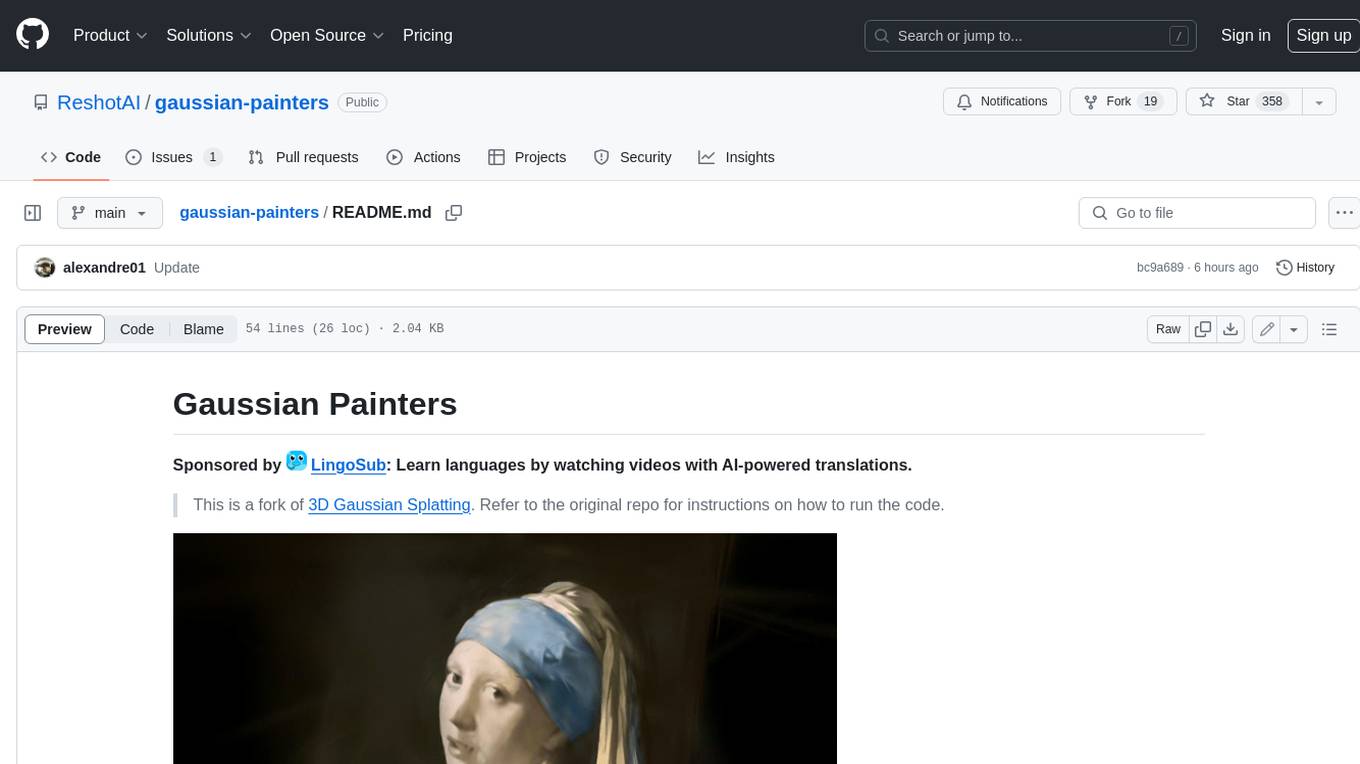
gaussian-painters
This tool is a fork of the 3D Gaussian Splatting code. It allows users to create a dataset ready to be trained with the Gaussian Splatting code. The dataset can be used for various experiments, such as creating orthogonal images, steganography, and lenticular effects. The tool also includes a visualizer that allows users to visualize the "painting" process during the Gaussian Splatting optimization.
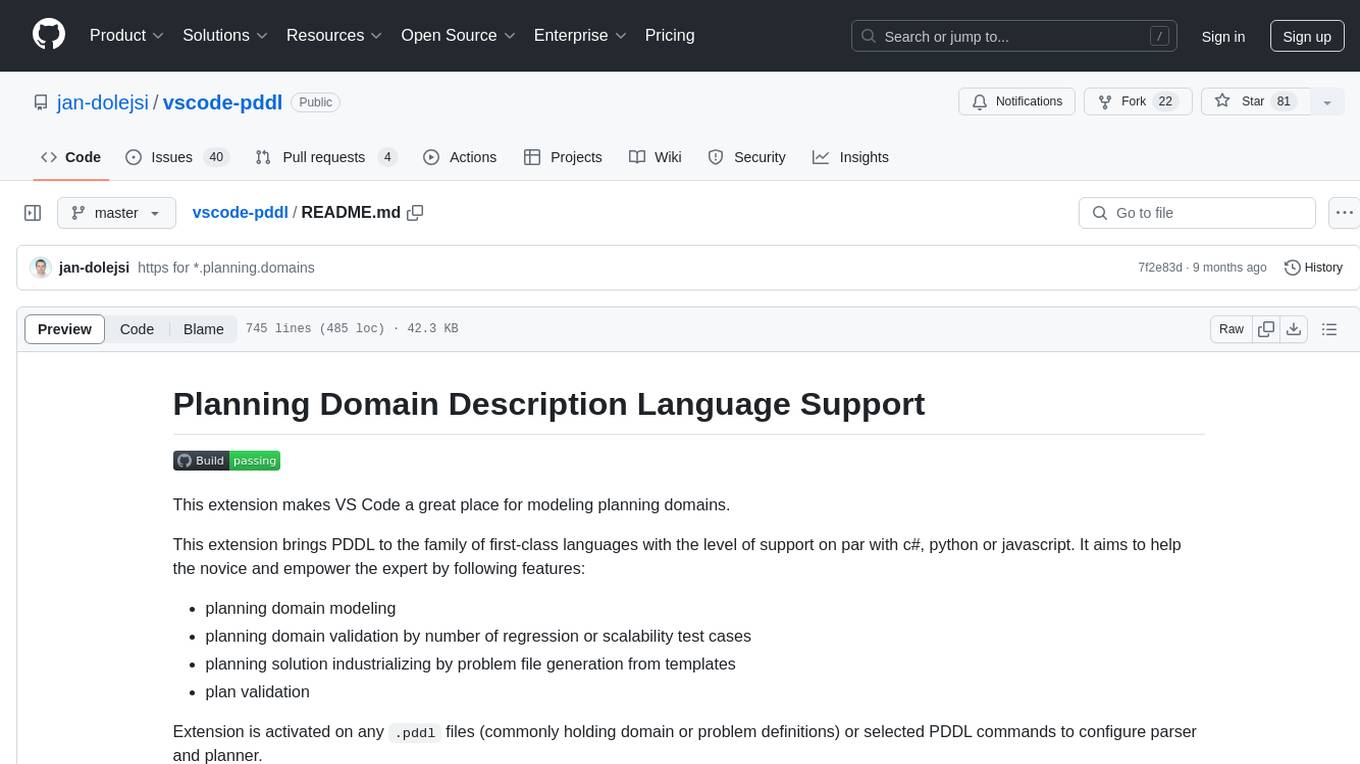
vscode-pddl
The vscode-pddl extension provides comprehensive support for Planning Domain Description Language (PDDL) in Visual Studio Code. It enables users to model planning domains, validate them, industrialize planning solutions, and run planners. The extension offers features like syntax highlighting, auto-completion, plan visualization, plan validation, plan happenings evaluation, search debugging, and integration with Planning.Domains. Users can create PDDL files, run planners, visualize plans, and debug search algorithms efficiently within VS Code.

numerapi
Numerapi is a Python client to the Numerai API that allows users to automatically download and upload data for the Numerai machine learning competition. It provides functionalities for downloading training data, uploading predictions, and accessing user, submission, and competitions information for both the main competition and Numerai Signals competition. Users can interact with the API using Python modules or command line interface. Tokens are required for certain actions like uploading predictions or staking, which can be obtained from Numer.ai account settings. The tool also supports features like checking new rounds, getting leaderboards, and managing stakes.

kaito
Kaito is an operator that automates the AI/ML inference model deployment in a Kubernetes cluster. It manages large model files using container images, avoids tuning deployment parameters to fit GPU hardware by providing preset configurations, auto-provisions GPU nodes based on model requirements, and hosts large model images in the public Microsoft Container Registry (MCR) if the license allows. Using Kaito, the workflow of onboarding large AI inference models in Kubernetes is largely simplified.

MegatronApp
MegatronApp is a toolchain built around the Megatron-LM training framework, offering performance tuning, slow-node detection, and training-process visualization. It includes modules like MegaScan for anomaly detection, MegaFBD for forward-backward decoupling, MegaDPP for dynamic pipeline planning, and MegaScope for visualization. The tool aims to enhance large-scale distributed training by providing valuable capabilities and insights.
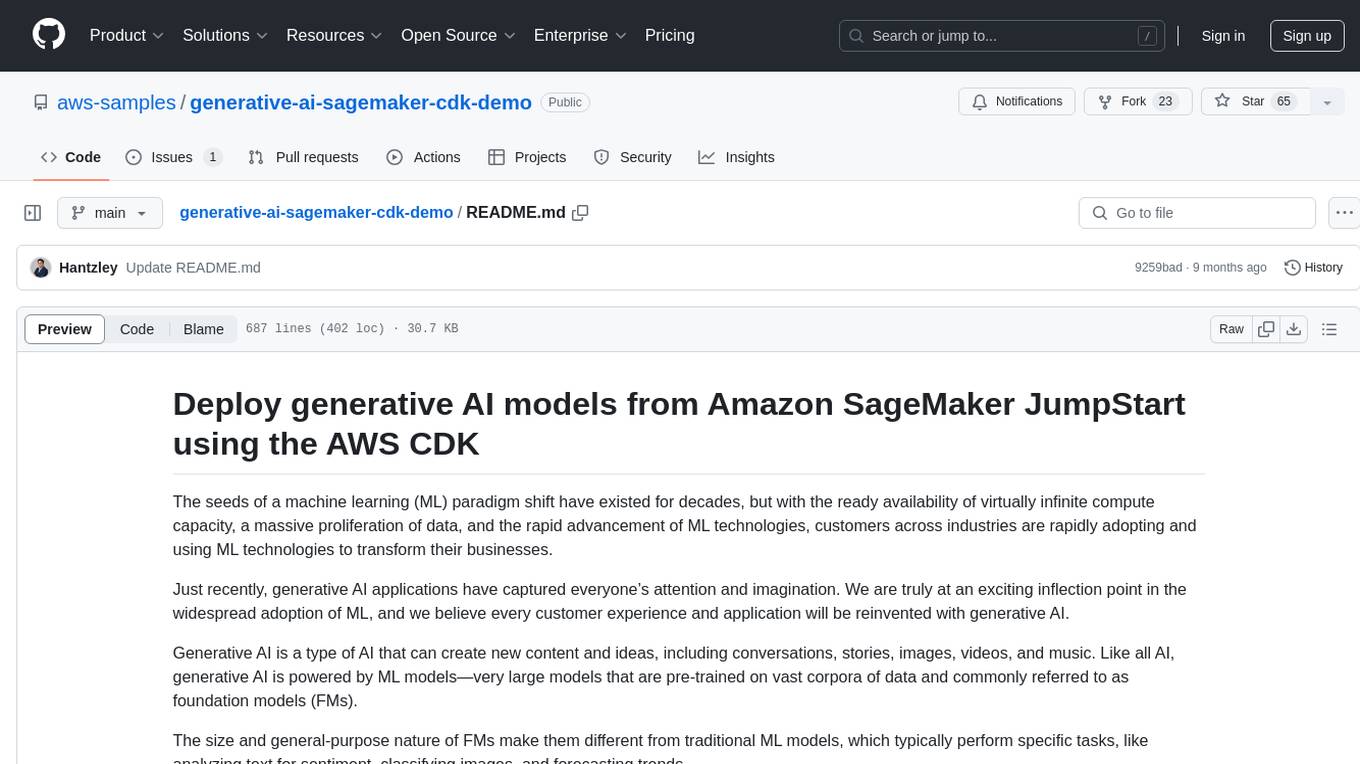
generative-ai-sagemaker-cdk-demo
This repository showcases how to deploy generative AI models from Amazon SageMaker JumpStart using the AWS CDK. Generative AI is a type of AI that can create new content and ideas, such as conversations, stories, images, videos, and music. The repository provides a detailed guide on deploying image and text generative AI models, utilizing pre-trained models from SageMaker JumpStart. The web application is built on Streamlit and hosted on Amazon ECS with Fargate. It interacts with the SageMaker model endpoints through Lambda functions and Amazon API Gateway. The repository also includes instructions on setting up the AWS CDK application, deploying the stacks, using the models, and viewing the deployed resources on the AWS Management Console.
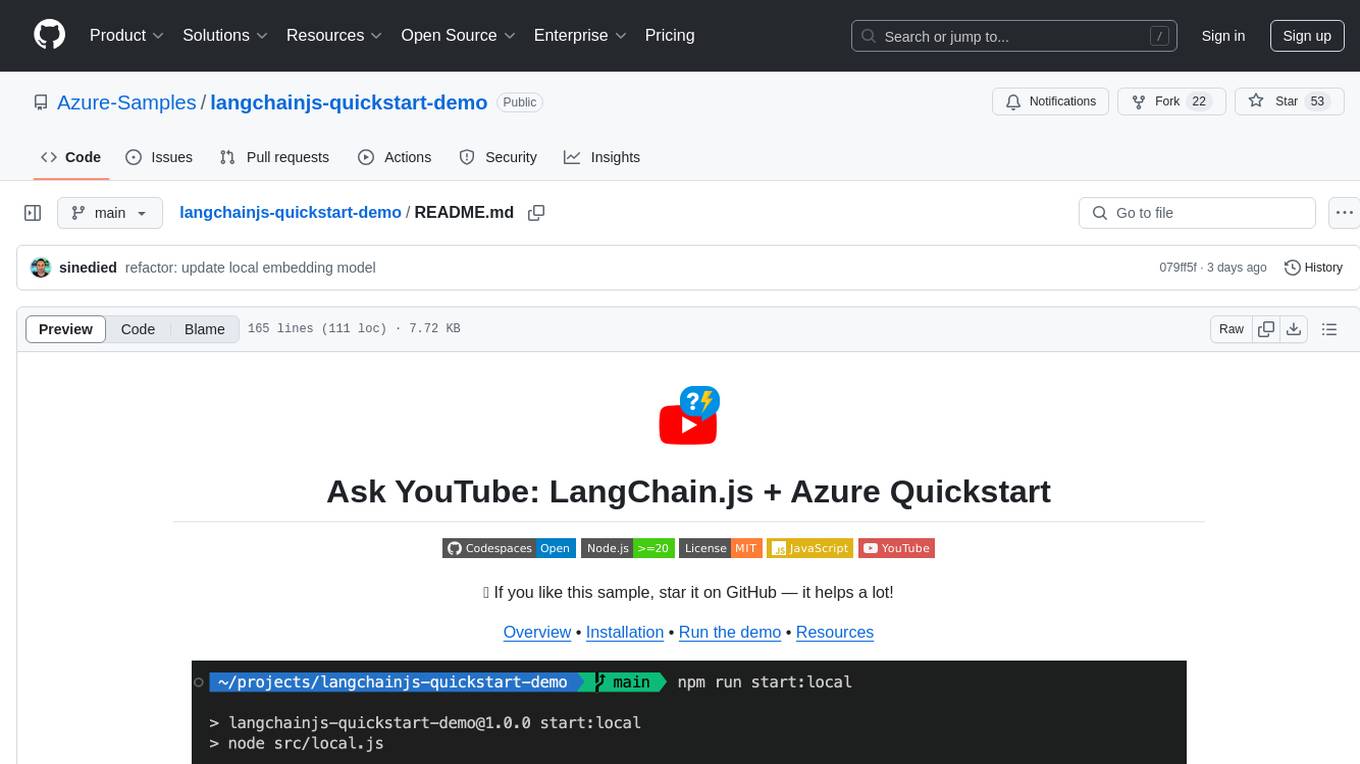
langchainjs-quickstart-demo
Discover the journey of building a generative AI application using LangChain.js and Azure. This demo explores the development process from idea to production, using a RAG-based approach for a Q&A system based on YouTube video transcripts. The application allows to ask text-based questions about a YouTube video and uses the transcript of the video to generate responses. The code comes in two versions: local prototype using FAISS and Ollama with LLaMa3 model for completion and all-minilm-l6-v2 for embeddings, and Azure cloud version using Azure AI Search and GPT-4 Turbo model for completion and text-embedding-3-large for embeddings. Either version can be run as an API using the Azure Functions runtime.
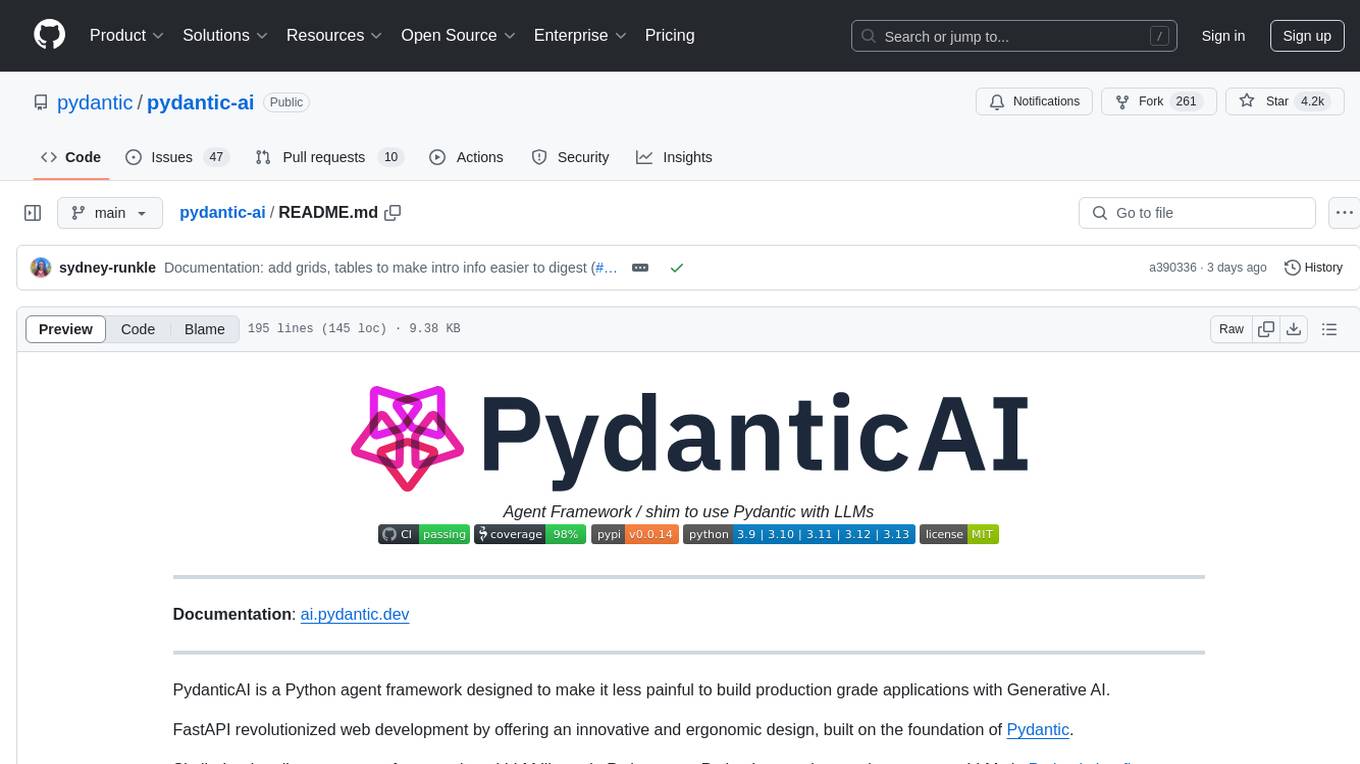
pydantic-ai
PydanticAI is a Python agent framework designed to make it less painful to build production grade applications with Generative AI. It is built by the Pydantic Team and supports various AI models like OpenAI, Anthropic, Gemini, Ollama, Groq, and Mistral. PydanticAI seamlessly integrates with Pydantic Logfire for real-time debugging, performance monitoring, and behavior tracking of LLM-powered applications. It is type-safe, Python-centric, and offers structured responses, dependency injection system, and streamed responses. PydanticAI is in early beta, offering a Python-centric design to apply standard Python best practices in AI-driven projects.
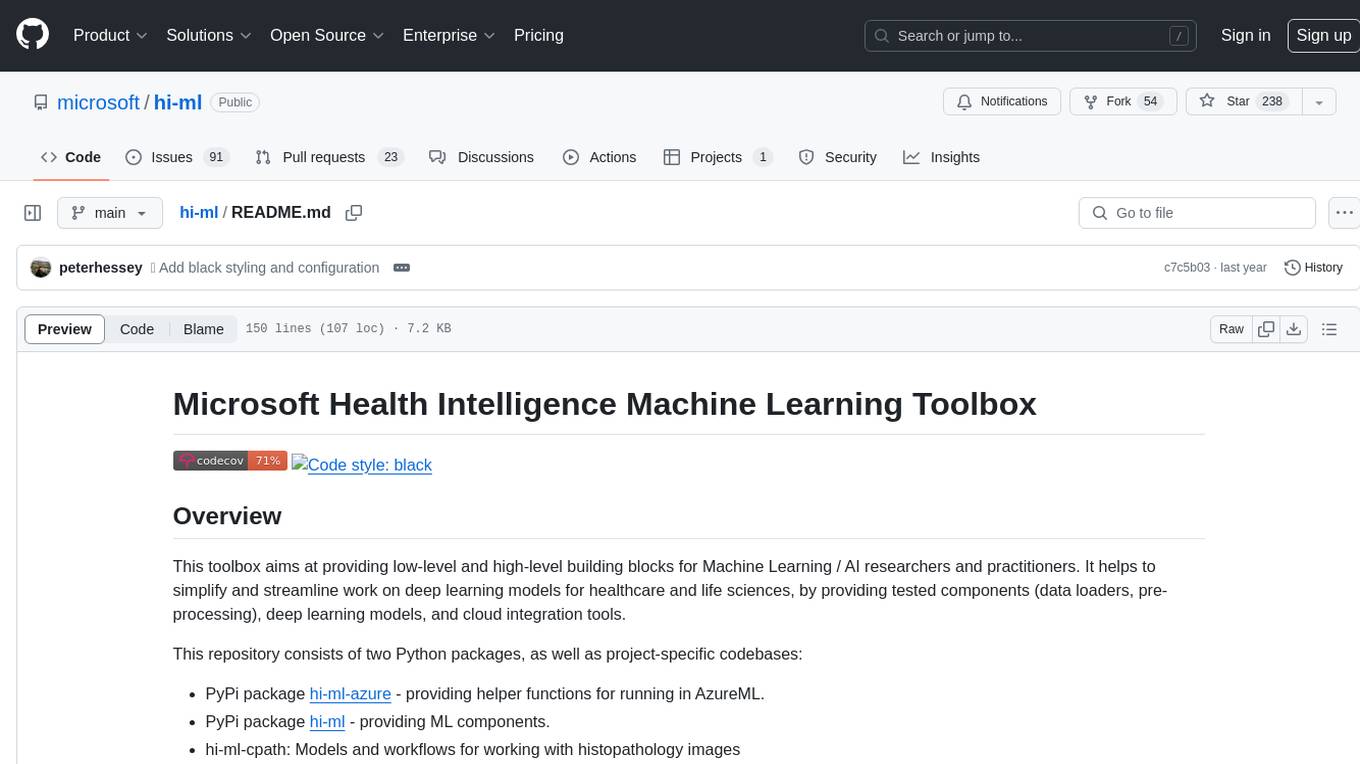
hi-ml
The Microsoft Health Intelligence Machine Learning Toolbox is a repository that provides low-level and high-level building blocks for Machine Learning / AI researchers and practitioners. It simplifies and streamlines work on deep learning models for healthcare and life sciences by offering tested components such as data loaders, pre-processing tools, deep learning models, and cloud integration utilities. The repository includes two Python packages, 'hi-ml-azure' for helper functions in AzureML, 'hi-ml' for ML components, and 'hi-ml-cpath' for models and workflows related to histopathology images.
For similar tasks

claude-code-router
This repository is for testing routing Claude Code requests to different models. It implements Normal Mode and Router Mode, using various models like qwen2.5-coder-3b-instruct, qwen-max-0125, deepseek-v3, and deepseek-r1. The project aims to reduce the cost of using Claude Code by leveraging free models and KV-Cache. Users can set appropriate ignorePatterns for the project. The Router Mode allows for the separation of tool invocation from coding tasks by using multiple models for different purposes.
For similar jobs
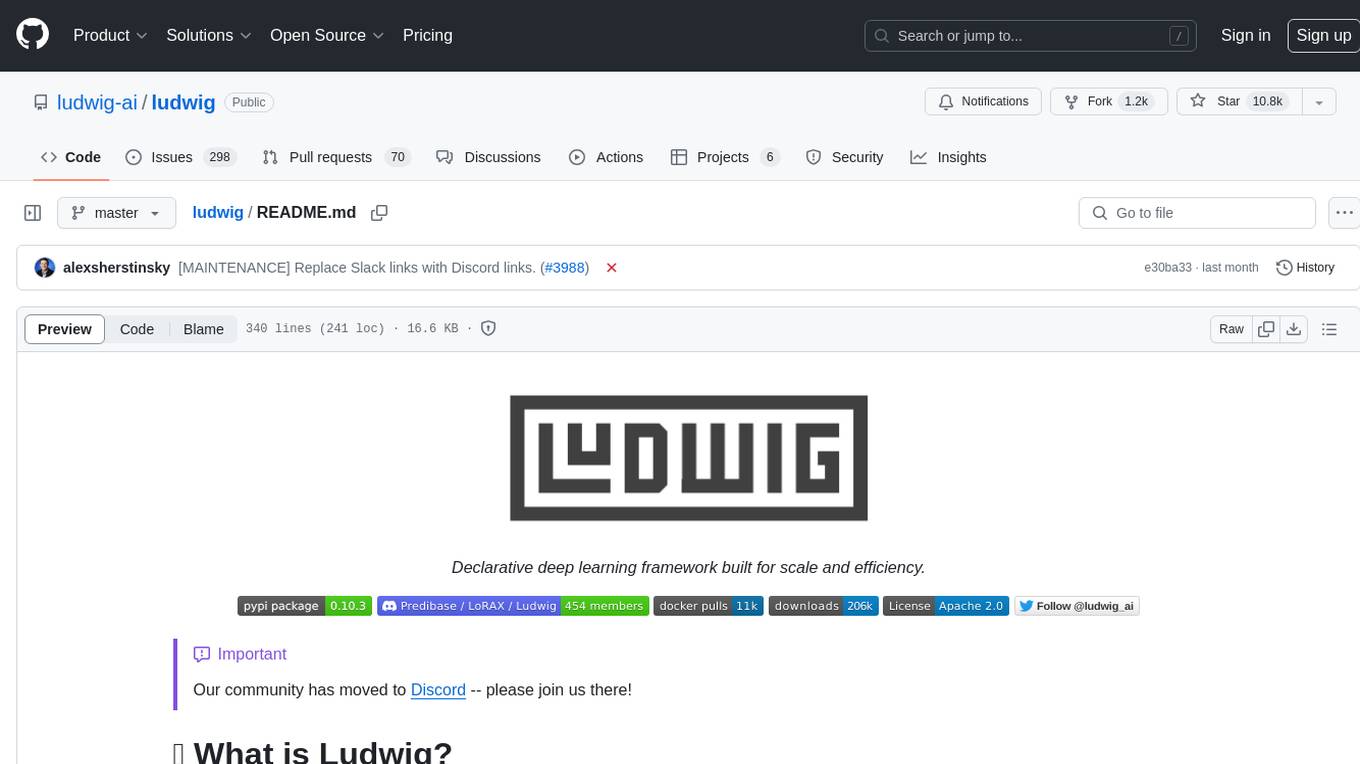
ludwig
Ludwig is a declarative deep learning framework designed for scale and efficiency. It is a low-code framework that allows users to build custom AI models like LLMs and other deep neural networks with ease. Ludwig offers features such as optimized scale and efficiency, expert level control, modularity, and extensibility. It is engineered for production with prebuilt Docker containers, support for running with Ray on Kubernetes, and the ability to export models to Torchscript and Triton. Ludwig is hosted by the Linux Foundation AI & Data.
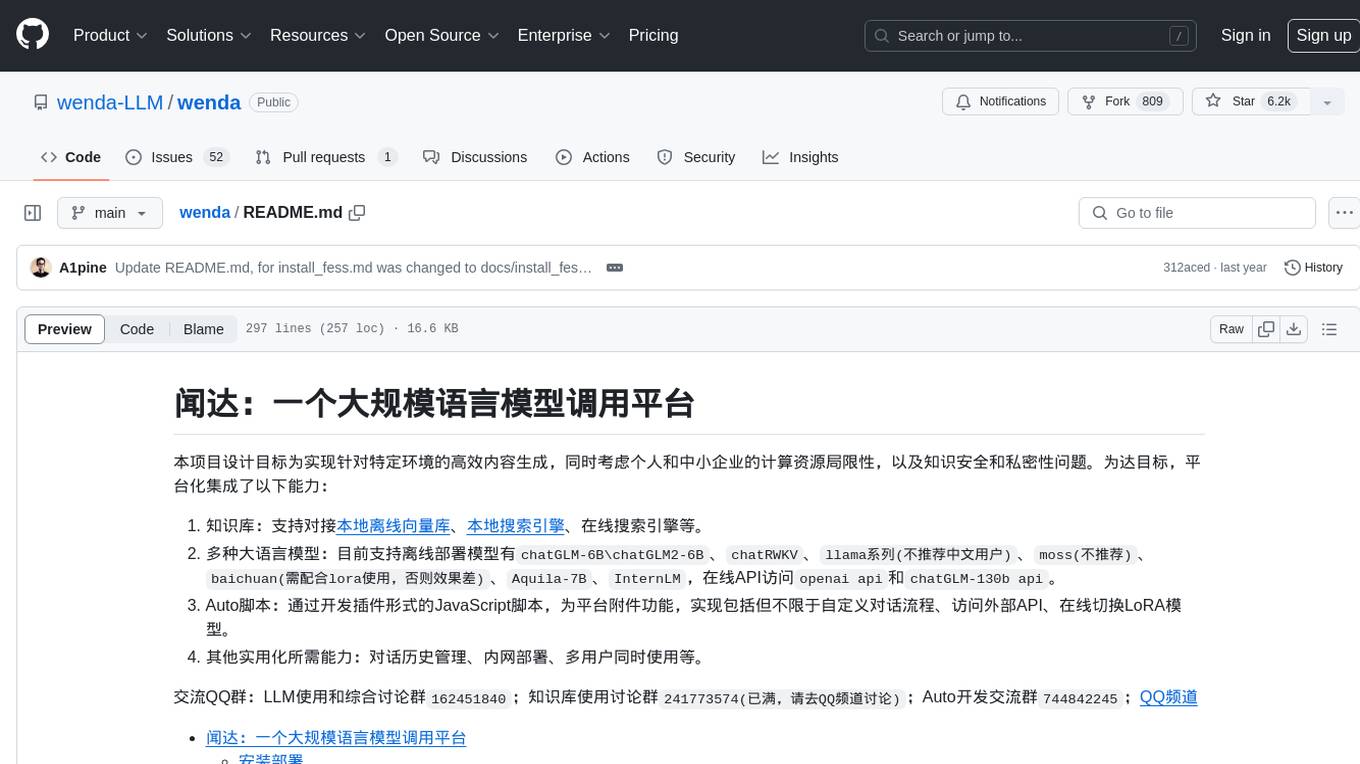
wenda
Wenda is a platform for large-scale language model invocation designed to efficiently generate content for specific environments, considering the limitations of personal and small business computing resources, as well as knowledge security and privacy issues. The platform integrates capabilities such as knowledge base integration, multiple large language models for offline deployment, auto scripts for additional functionality, and other practical capabilities like conversation history management and multi-user simultaneous usage.

LLMonFHIR
LLMonFHIR is an iOS application that utilizes large language models (LLMs) to interpret and provide context around patient data in the Fast Healthcare Interoperability Resources (FHIR) format. It connects to the OpenAI GPT API to analyze FHIR resources, supports multiple languages, and allows users to interact with their health data stored in the Apple Health app. The app aims to simplify complex health records, provide insights, and facilitate deeper understanding through a conversational interface. However, it is an experimental app for informational purposes only and should not be used as a substitute for professional medical advice. Users are advised to verify information provided by AI models and consult healthcare professionals for personalized advice.

Chinese-Mixtral-8x7B
Chinese-Mixtral-8x7B is an open-source project based on Mistral's Mixtral-8x7B model for incremental pre-training of Chinese vocabulary, aiming to advance research on MoE models in the Chinese natural language processing community. The expanded vocabulary significantly improves the model's encoding and decoding efficiency for Chinese, and the model is pre-trained incrementally on a large-scale open-source corpus, enabling it with powerful Chinese generation and comprehension capabilities. The project includes a large model with expanded Chinese vocabulary and incremental pre-training code.
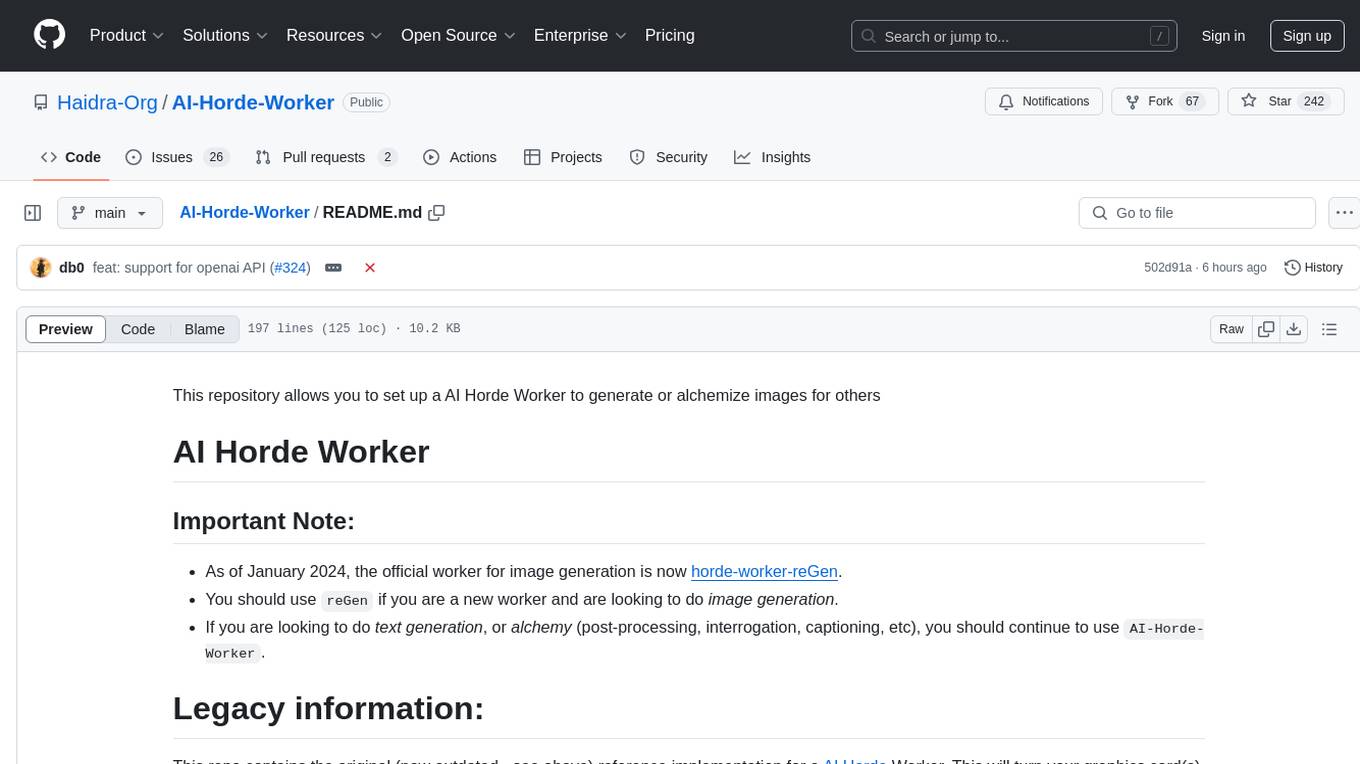
AI-Horde-Worker
AI-Horde-Worker is a repository containing the original reference implementation for a worker that turns your graphics card(s) into a worker for the AI Horde. It allows users to generate or alchemize images for others. The repository provides instructions for setting up the worker on Windows and Linux, updating the worker code, running with multiple GPUs, and stopping the worker. Users can configure the worker using a WebUI to connect to the horde with their username and API key. The repository also includes information on model usage and running the Docker container with specified environment variables.
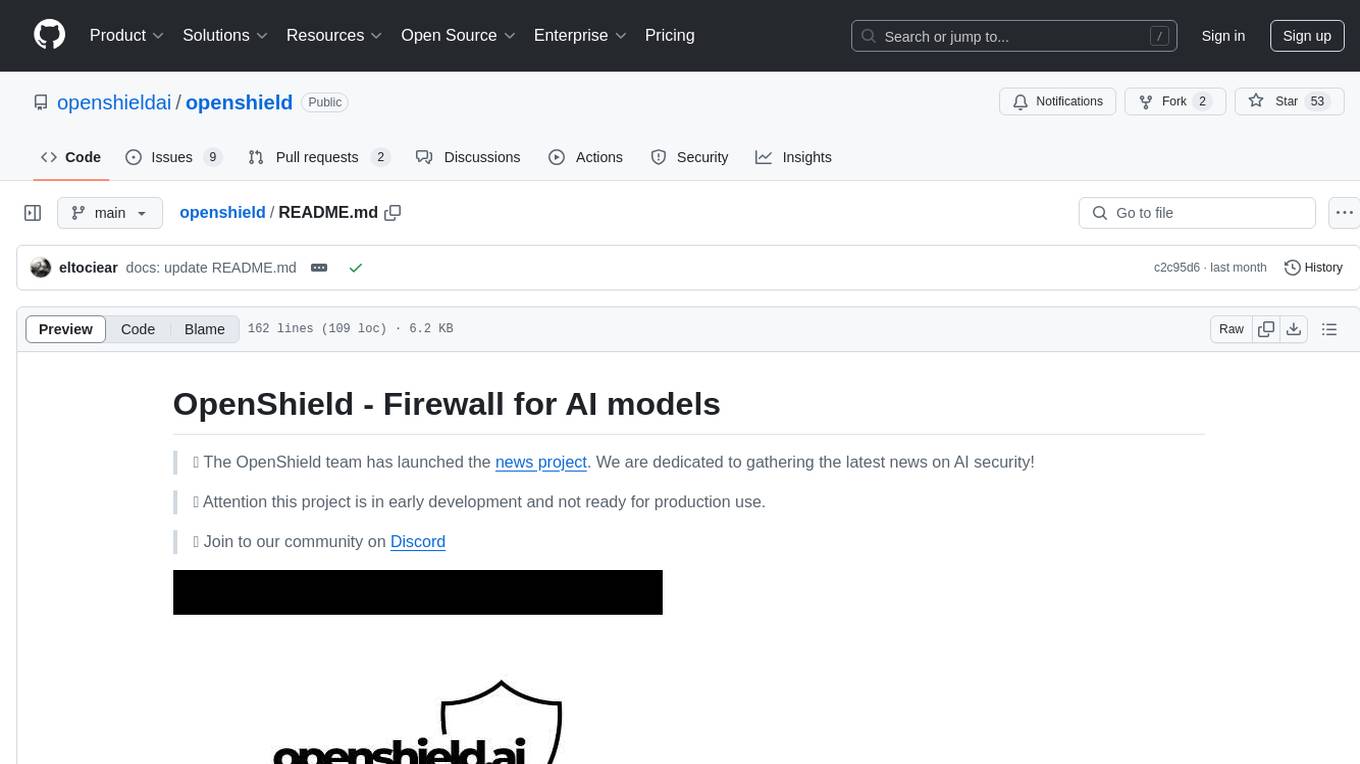
openshield
OpenShield is a firewall designed for AI models to protect against various attacks such as prompt injection, insecure output handling, training data poisoning, model denial of service, supply chain vulnerabilities, sensitive information disclosure, insecure plugin design, excessive agency granting, overreliance, and model theft. It provides rate limiting, content filtering, and keyword filtering for AI models. The tool acts as a transparent proxy between AI models and clients, allowing users to set custom rate limits for OpenAI endpoints and perform tokenizer calculations for OpenAI models. OpenShield also supports Python and LLM based rules, with upcoming features including rate limiting per user and model, prompts manager, content filtering, keyword filtering based on LLM/Vector models, OpenMeter integration, and VectorDB integration. The tool requires an OpenAI API key, Postgres, and Redis for operation.
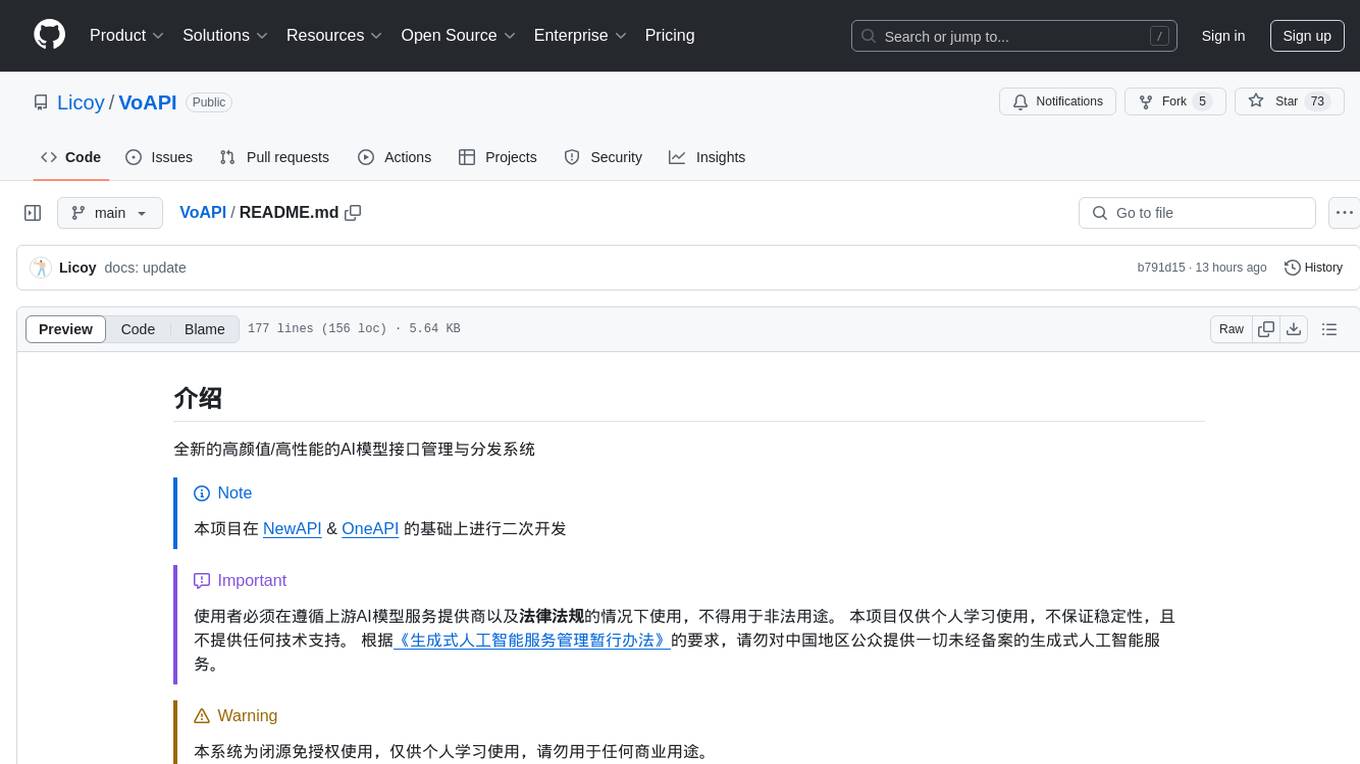
VoAPI
VoAPI is a new high-value/high-performance AI model interface management and distribution system. It is a closed-source tool for personal learning use only, not for commercial purposes. Users must comply with upstream AI model service providers and legal regulations. The system offers a visually appealing interface, independent development documentation page support, service monitoring page configuration support, and third-party login support. It also optimizes interface elements, user registration time support, data operation button positioning, and more.

VoAPI
VoAPI is a new high-value/high-performance AI model interface management and distribution system. It is a closed-source tool for personal learning use only, not for commercial purposes. Users must comply with upstream AI model service providers and legal regulations. The system offers a visually appealing interface with features such as independent development documentation page support, service monitoring page configuration support, and third-party login support. Users can manage user registration time, optimize interface elements, and support features like online recharge, model pricing display, and sensitive word filtering. VoAPI also provides support for various AI models and platforms, with the ability to configure homepage templates, model information, and manufacturer information.


